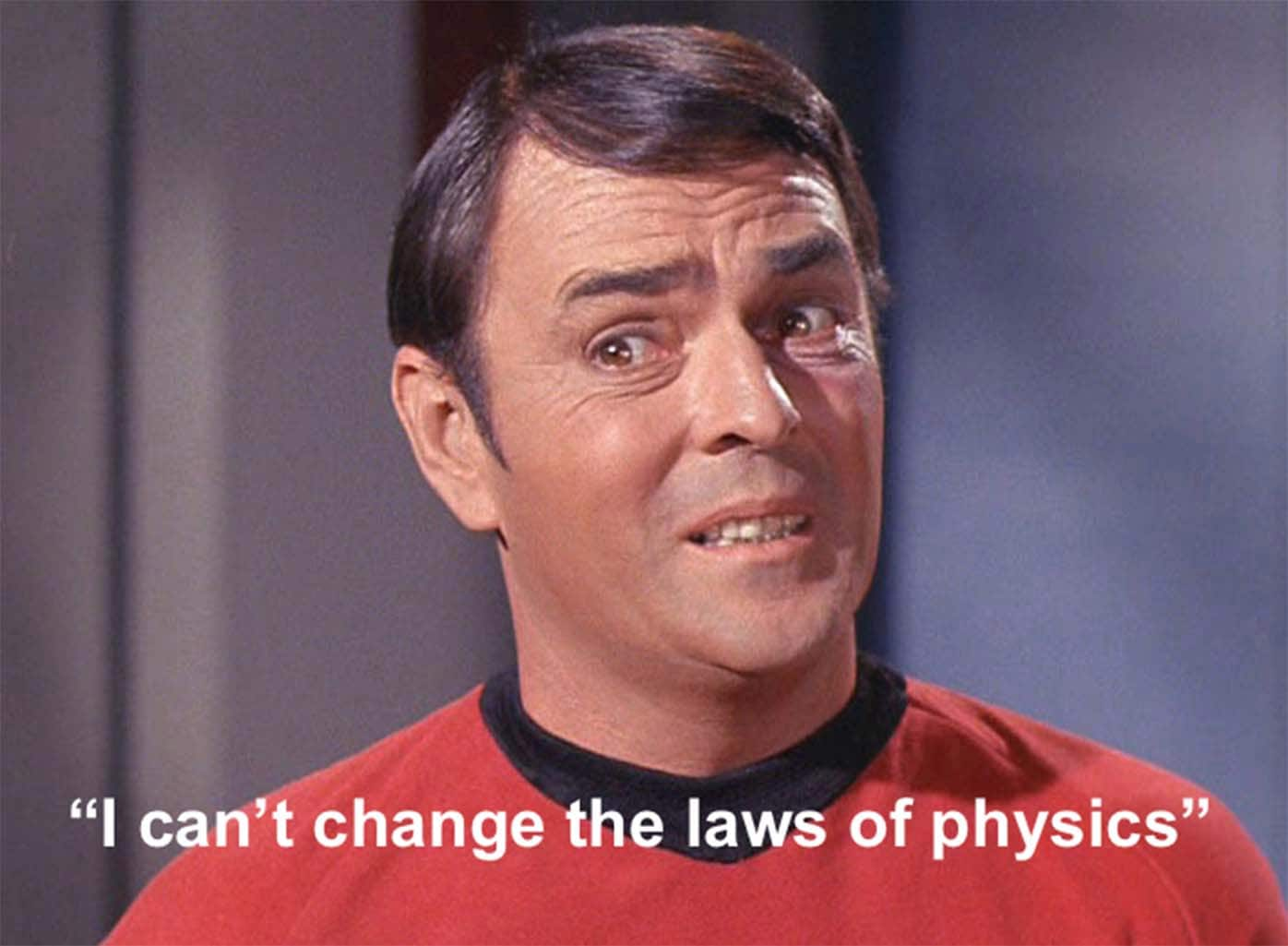A lesson from Star Trek: to guarantee training results


Derek Robertson , CEO
(Chartered FCIPD, MCMI, MInstLM, NLP Practitioner and Coach)
Author of The Great Cape Escapade (A Fable about effective meetings)
4 min read
17 September 2021
Engineer Scott’s plea to his captain who demanded improved results has parallels to business training. Pushing back constructively will help you get more from your training buck.
In each Star Trek episode, there’s a need to get more from the engines. Jeopardy from an impending disaster, an outside influence or quick repairs. Kirk, the great leader but no engineering specialist, demands results and gives him little or no resources (usually time). Scott and his team protecst, work their magic, success ensues, and the ship continues to its next episode.
In the "The naked time" however Kirk's outrageous results demand with limited resources led Scott to his classic TV line, "I can't change the laws of physics'.
From TV to training
Substitute engineer Scott for the training manager, Captain Kirk for the business leader and the engines our human resources (when will that term disappear?) and we see teh analogy to business training and how to get results.
Unlike Hollywood however, getting improved business results from training lives in the real world. There's no magic. How adults learn effectively is too often sacrificed to Kirk-like demands of:
- What can you do in 2 hours?
- We are only doing mandatory training at the moment
- What can you do for £100?
- The staff won’t do any pre-work
Operating to these criteria show problems in understanding effective learning, professional integrity, stakeholder engagement and influence. Sure, by caving to these criteria you tick the box and say training was done. But ambitions of improved performance are now delusions.
The laws of physics/adult learning
Just as Scotty can’t change the laws of physics you can’t change the laws of successful adult learning.
| All too common. Result: Box ticked | What research and practice tell us. Result: improved performance |
| Minimal analysis leading to broad subject heading | Forensic needs analysis to reveal specific needs |
| Learners excluded from the process | Learners involved in the analysis, design and evaluation |
| Line manager is missing | Learner and line manager a team - planning for results afterward |
| Bland joining instructions issued | Advance activity to arouse curiosity, deliver knowledge, confirm intended success measures |
| Training delivers prescribed content | Facilitated sessions on what adults do best: use their experience, discuss, challenge, explore, apply to their real world problems |
| Spotlight on the trainer | Spotlight on the participants |
| Superficial action planning | Quality action planning including overcoming expected workplace challenges |
| Back to work: back to normal | Opportunities to apply at work, support, feedback and challenge from line manager |
| No meaningful review | Celebrate success in measurable results |
| Learners sceptical and reject future training opportunities | Learners now advocate for the organisation and are more capable, confident and agile learners for next time. |
The China syndrome
I know, because it’s happened to me, that in China for example learners expect an expert to talk while they take copious notes. I’ll channel John Whitmore by saying expecting is different from preferring.
Your takeaways
- Acknowledge that it’s easy to say yes to requests from the business, even when you know they are unlikely to succeed.
- Decide to challenge, in appropriate ways, using your knowledge, understanding of people and the intended results the business wants.
- Be super interested in the training designs and trainers you commission
Final thought
Even if you hate sci-fi, be ready to challenge training demands that simply cannot be achieved. In HR we’re paid to use our capability to add value. That means challenge as well as support. Every CEO would rather invest in one training priority that delivered spectacularly than five that delivered nothing.
Your next action
Check out the following resources and downloads to help you:
- Take the stress out of securing leadership training budget
- Six secrets to choosing a quality training provider
- Five useful tips from the experts to get passed “No”
- Blog: Time to end the factory model of training

